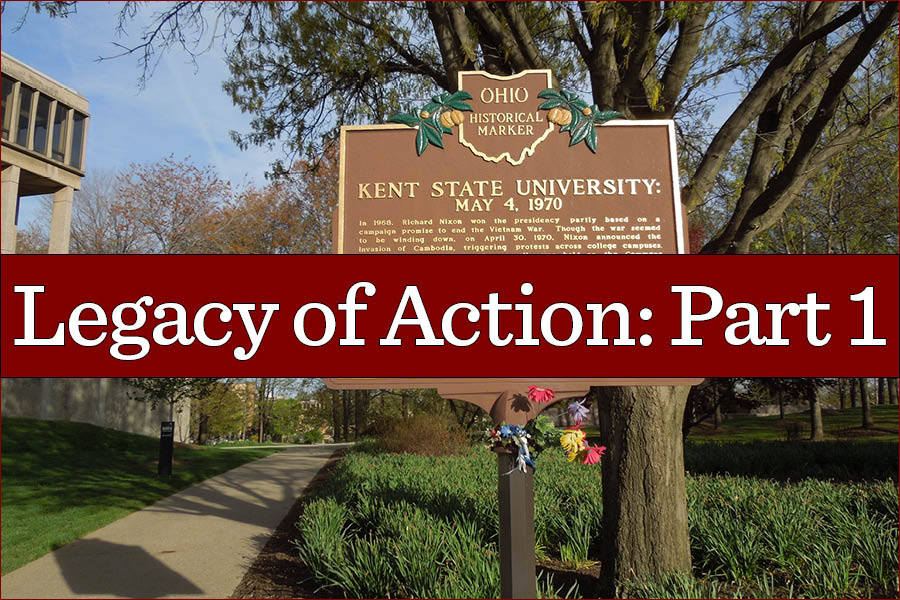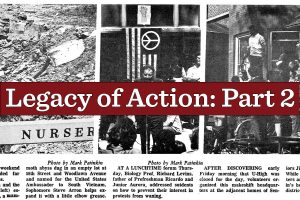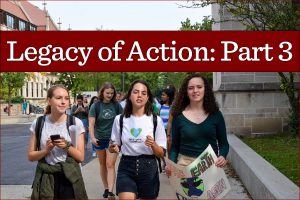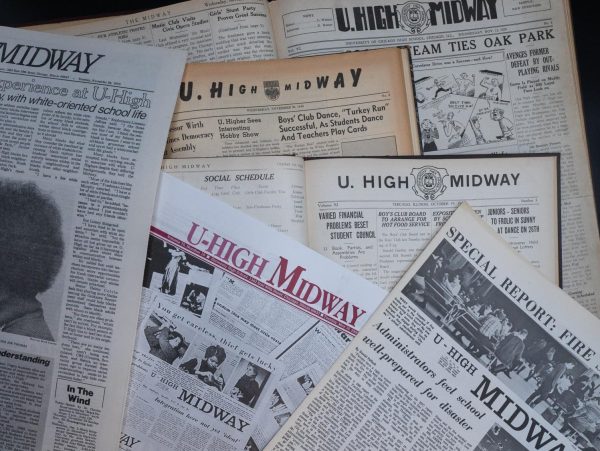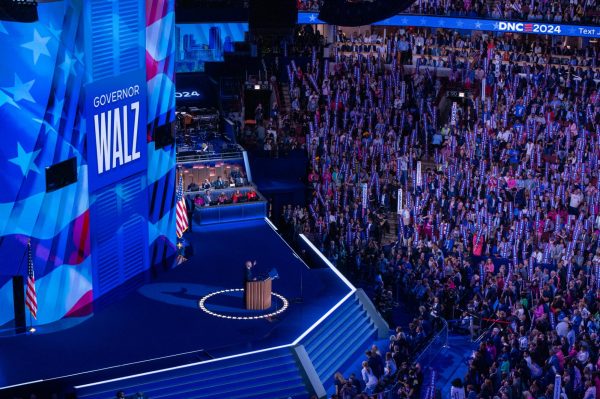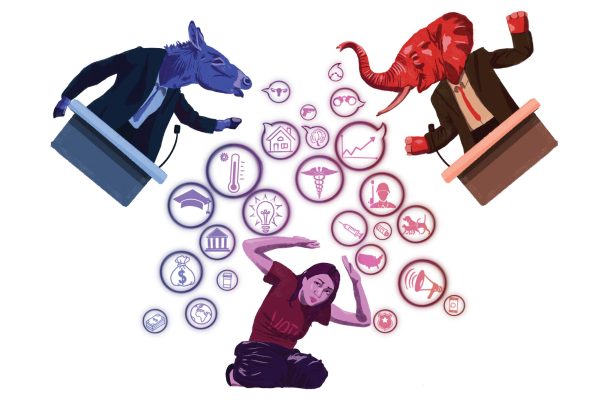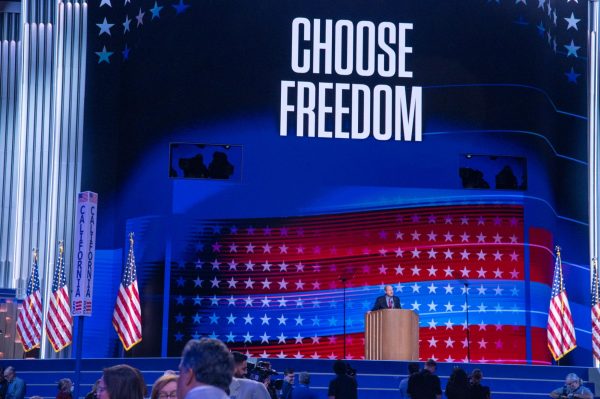Legacy of action: The Kent State shooting, 50 years later
About 50 years ago an estimated 800 schools around the country closed at the same time — but there was no coronavirus pandemic. Instead, over 4 million students went on strike in response to the Kent State University shooting on May 4, 1970, in Kent, Ohio.
Called into Kent on May 2 after violent protests the days before, the Ohio National Guard arrived as the campus’ ROTC building was being burned down by protestors. Leading up to the shooting, guards had been posted around campus. On May 4, they shot for 13 seconds into a crowd of about 3,000 students protesting the United States attack against Cambodia during the Vietnam War, which had been announced by President Richard Nixon a few days earlier on April 30.

Four students were killed and nine were wounded.
The shooting caused Americans to pay attention to the war and eventually led to U.S. withdrawal from Vietnam, according to John Bowen, an adjunct professor in the School of Journalism and Mass Communication at Kent State University.
Emphasizing the damage, David Crosby, Stephen Stills, Graham Nash and Neil Young composed “Ohio” where the lyrics “four dead in Ohio” are repeated. According to U-High history teacher Paul Horton, the song served as an anthem for students protesting the Vietnam War after the shooting.
Mr. Bowen graduated from Kent State University in 1969 and recalls the lack of understanding between the protestors and members of the Ohio National Guard.
“You had people the same age against each other. There was no real time for them to talk to each other and try and work some of this out,” Mr. Bowen said.
In spring 1970, Mr. Bowen was a courier unit lieutenant stationed in Ho Chi Minh City — then known as Saigon — when hearing about the event back home in Ohio.
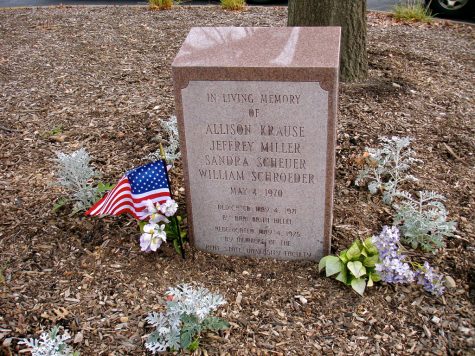
“It made me angry. It made me very angry,” he said. “From what I heard leading up to it, I didn’t see any reasons for it. Anybody shouldn’t be shooting anybody else — especially not on an American college campus.”
According to Mr. Bowen, there were mixed opinions toward Kent State students due to the destruction caused by the protestors.
He tried to consider the perspective of the guards and how they didn’t know what to expect when called to campus.
“It’s real possible that some members of the national guard felt that they were defending themselves and their lives,” he said. “I don’t see it though. They’re the ones with the guns.”
He said one member of his military group did not support the student protestors.
“He decided to let us know that his opinion was they should’ve shot more of them,” Mr. Bowen said. “Being an officer I decided that this master sergeant needed to have a lot of grace and attention.”
The violence did not end at Kent. Ten days later on May 14, police shot more than 150 rounds into Alexander Hall at Jackson State University in Jackson, Mississippi. Police were called in response to a report of black youths throwing rocks at white motorists.
Two students were killed and 12 were wounded.
“It wasn’t even as though these students are out protesting in the open or challenging the police,” Mr. Horton said. “The police surrounded the dormitories and shot indiscriminately into the dormitories.”
Both events occurred in response to U.S. involvement in the unpopular Vietnam War as people started to protest against it.
During the war, Nixon supported the policy of “Vietnamization,” which would leave combat to the South Vietnamese troops. However, Nixon continued to bomb North Vietnam, and U.S. and South Vietnamese troops attacked North Vietnam sanctuaries in Cambodia in 1970.
“The long-term impact of that invasion of Cambodia was to intensify the Cambodian civil war,” Mr. Horton said, “and it ultimately led to a genocide in Cambodia because it destabilized the government in Cambodia.”
Detailed information about U.S. involvement in Indochina from World War II to 1968 was leaked in the Pentagon Papers in 1971, and the Watergate scandal reported in 1972 revealed Nixon’s attempts to cover up five burglars breaking into the Democratic National Committee.
“So you have Kent State, invasion of Cambodia, Pentagon Papers, and then Watergate,” Mr. Horton said. “There was a progressive series of events from the late ’60s to Watergate that basically really created more and more distrust in the American government.”
The shooting also emphasized the importance of peaceful protest.
Considering the tension between Kent State University students and the Ohio National Guard, Mr. Bowen said, “They should’ve been listening to the students more, and the students should be making more of an attempt to make sure everyone understood their protest was going to be peaceful.”
However, in remembering the event, it is important to consider the students who indeed protested peacefully and were not involved in burning down the ROTC building.
“Yes, there was violence, but this is a small minority,” Mr. Horton said. “Almost all the students who were protesting at Kent State had nothing whatsoever to do with the burning of the ROTC building. This is something that’s very important for students today to understand.”
Although the Kent State shooting only lasted 13 seconds, its impact has extended many years into the future.
“It alienated a generation of progressive Democrats from believing in the federal government,” Mr. Horton said. “We believe that the federal government was controlled by corporations and the military or the military industrial complex, and they would do whatever it was to serve their interests, but they weren’t willing to serve the interests of the average American citizen.”
Mr. Horton believes history shows the protestors were on the right side of history.
“I think in a lot of ways, the people who protested against the war were the real Americans,” he said. “They believed that what was going on in Vietnam did not represent American values, that we shouldn’t have been in Vietnam in the first place — and I think the Pentagon papers being released have vindicated that.”





















































